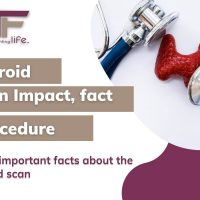Anemia is a blood disorder in which the blood has a reduced ability to carry oxygen due to a lower than normal number of red blood cells or a reduction in the amount of hemoglobin.
Symptoms –
(1)Tiredness
(2)Weakness
(3)Shortness of breath
(4)Headaches
(5)Reduced ability to exercise
Causes –
(1)bleeding due to inflammation of the stomach or intestines
(2)bleeding from surgery
(3) serious injury or blood donation.
Causes of decreased production
(1)iron deficiency
(2) vitamin B12 deficiency
(3) thalassemia and a number of bone marrow tumors.
Causes of increased breakdown
(1) genetic disorders such as sickle cell anemia. (2)infections such as malaria. (3)certain autoimmune diseases.
Anemia can also be classified based on the size of the red blood cells and amount of hemoglobin in each cell.
If the cells are small, it is called microcytic anemia.
if they are large, it is called macrocytic anemia.
if they are normal sized, it is called normocytic anemia.
Microcytic anemia is primarily a result of hemoglobin synthesis failure/insufficiency, which could be caused by several etiologies:
(1)Heme synthesis defect
(2)Iron deficiency anemia (microcytosis is not always present)
(3)Anemia of chronic disease (more commonly presenting as normocytic anemia)
(4)Globin synthesis defect
(5)Alpha and beta-thalassemia
(6)HbE syndrome
(7)HbC syndrome
(8)Hereditary sideroblastic anemia
(9)Acquired sideroblastic anemia including lead toxicity.
Macrocytic Anemia
Megaloblastic anemia, the most common cause of macrocytic anemia, is due to a deficiency of either vitamin B12, folic acid, or both.
Deficiency in folate or vitamin B12 can be due either to inadequate intake or insufficient absorption. Folate deficiency normally does not produce neurological symptoms, while B12 deficiency does.
Pernicious anemia is caused by a lack of intrinsic factor, which is required to absorb vitamin B12 from food. A lack of intrinsic factor may arise from an autoimmune condition targeting the parietal cells (atrophic gastritis) that produce intrinsic factor or against intrinsic factor itself. These lead to poor absorption of vitamin B12.
Macrocytic anemia can also be caused by the removal of the functional portion of the stomach, such as during gastric bypass surgery, leading to reduced vitamin B12/folate absorption. Therefore, one must always be aware of anemia following this proced
Pernicious anemia caused by loss of intrinsic factor cannot be prevented. If there are other, reversible causes of low vitamin B12 levels, the cause must be treated.
Diagnosis
The diagnosis of anemia in men is based on a hemoglobin of less than (13 to 14 g/dL).
in women, it is less than (12 to 13 g/dL).
These tests may include:
complete blood count (CBC); a CBC is used to count the number of blood cells in a sample of the blood. For anemia, it will likely to be interested in the levels of the red blood cells contained in blood (hematocrit), hemoglobin, mean corpuscular volume.
determine the size and shape of red blood cells; some of red blood cells might also be examined for unusual size, shape and color.
serum ferritin; This protein helps store iron in the body, a low levels of ferritin usually indicates a low levels of stored iron.
serum vitamin B12; low levels usually develop an anemia, vitamin B12 is needed to make red blood cells, which carry oxygen to all parts of human body.
blood tests to detect rare causes; such as an immune attack on red blood cells, red blood cell fragility, and defects of enzymes, hemoglobin, and clotting.
a bone marrow sample; when the cause is unclear, a bone marrow test is performed, most often, when some blood cell defect is suspected.
Treatment
Vitamin B12 deficiency anemia is usually easily treated by providing the necessary level of vitamin B12 supplementation.
The injections are quick-acting, and symptoms usually go away within one to two weeks .As the condition improves, doses are reduced to weeks and then can be given monthly.
Intramuscular therapy leads to more rapid improvement and should be considered in patients with severe deficiency or severe neurologic symptoms.
Treatment should begin rapidly for severe neurological symptoms, as some changes can become permanent. In some individuals lifelong treatment may be needed.
Erythropoiesis-stimulating agents
The objective for the administration of an erythropoiesis-stimulating agent (ESA) is to maintain hemoglobin at the lowest level that both minimizes transfusions and meets the individual person’s needs.
They should not be used for mild or moderate anemia.
They are not recommended in people with chronic kidney disease unless hemoglobin levels are less than 10 g/dL.
Their use should be along with parenteral iron.
Hyperbaric oxygen
Treatment of exceptional blood loss (anemia) is recognized as an indication for hyperbaric oxygen (HBO) by the Undersea and Hyperbaric Medical society .The use of HBO is indicated when oxygen delivery to tissue is not sufficient in patients who cannot be given blood transfusions for medical or religious reasons. HBO may be used for medical reasons when threat of blood product incompatibility or concern for transmissible disease are factors.











Comments